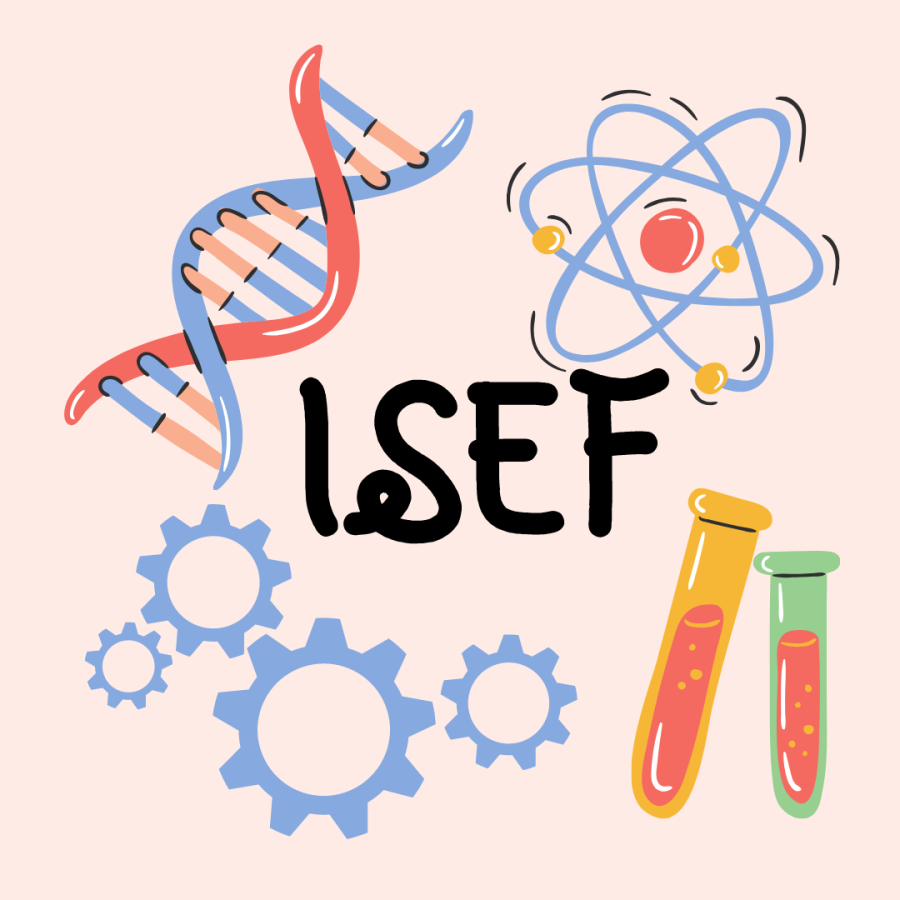ISEF inspirations
The ISEF season is starting, and students are beginning to think about their projects. If you are interested in ISEF, the information center is next to the library!
The ISEF season starts now – in September – and Ms. Danielle Schroeder (our district’s amazing science fair coordinator) visits science classrooms with information to join. The fair is in late February/early March and attracts over 200 students across the district. High school students compete for a spot at the state fair, and approximately four advance to the International Science and Engineering Fair: 2000+ participants and 75+ countries.
But what’s the hardest part of taking a project through the phases of idea, experimental design, testing, and to a presentable project? A few seasoned students, as well as Ms. Schroeder, speak on this topic.
George Peykanu, Senior, had “an initially very, very good idea that [he] was super excited about,” but the hardest part was “along the implementation and execution.” This is true for many students, who draft a project with multiple sub-projects within it. Often, the student feels overwhelmed, but by cutting down the research to a smaller goal, the project is more approachable.
Angel Cruz, Senior, says the hardest part wasn’t along “planning or researching,” but rather when his “project took an [unexpected] turn.” His experiments involved seeds sprouting, and they happened to not sprout. Since ISEF is a competitive event, there are many deadlines, so Angel “had to find a quick replacement before the symposium… so the plants would sprout before.”
Team projects also face similar struggles with getting and processing data within the timeline. Cassidy Yourg, Junior, says, “We ran into a lot of speed bumps along our testing process last year and it was really frustrating that we were not getting results that we hypothesized originally.” Without their expected results, consolidating and writing a report proved more difficult, but overall, they had a “good time” and ended up advancing to the state science fair (NWSE).
However, some students find challenges much earlier in the ISEF process. “Finding the right project for you and knowing what you want to study or create is the hard part,” says Paul Liu, Junior. “Everyone has different interests and different fields of interest.”
Usually, finding a topic you’re interested in learning, and a problem in an exciting and relevant field can help narrow down your project idea search. Choosing at intersections between different disciplines may also provide opportunities to continue and expand your work in the following years. If you keep cutting down the application field and research field you’re interested in (especially if the two fields are vastly different), you’ll find it easier to settle on a new, relevant, and enticing topic.
Ms. Schroeder says there are two primary sticking points. The first is an idea: it must be “worthwhile,” “practical,” and “feasible.” Most of the time “ideas [are] much [more] complicated than they thought…” The best step is to take a sub-project, which will eventually feed into the big question. “Sometimes [the project] feels small, [and] they don’t like that.”
The second part is “not getting psyched out when it comes to the interviews.” It’s really important to present relevant information concisely when you’re explaining a big project under a time limit.
Despite all these obstacles, hundreds of students participate in ISEF every year, and every single one of them walks away with a deep understanding of how the scientific process works.
Contact [email protected] for more information on how to join!











